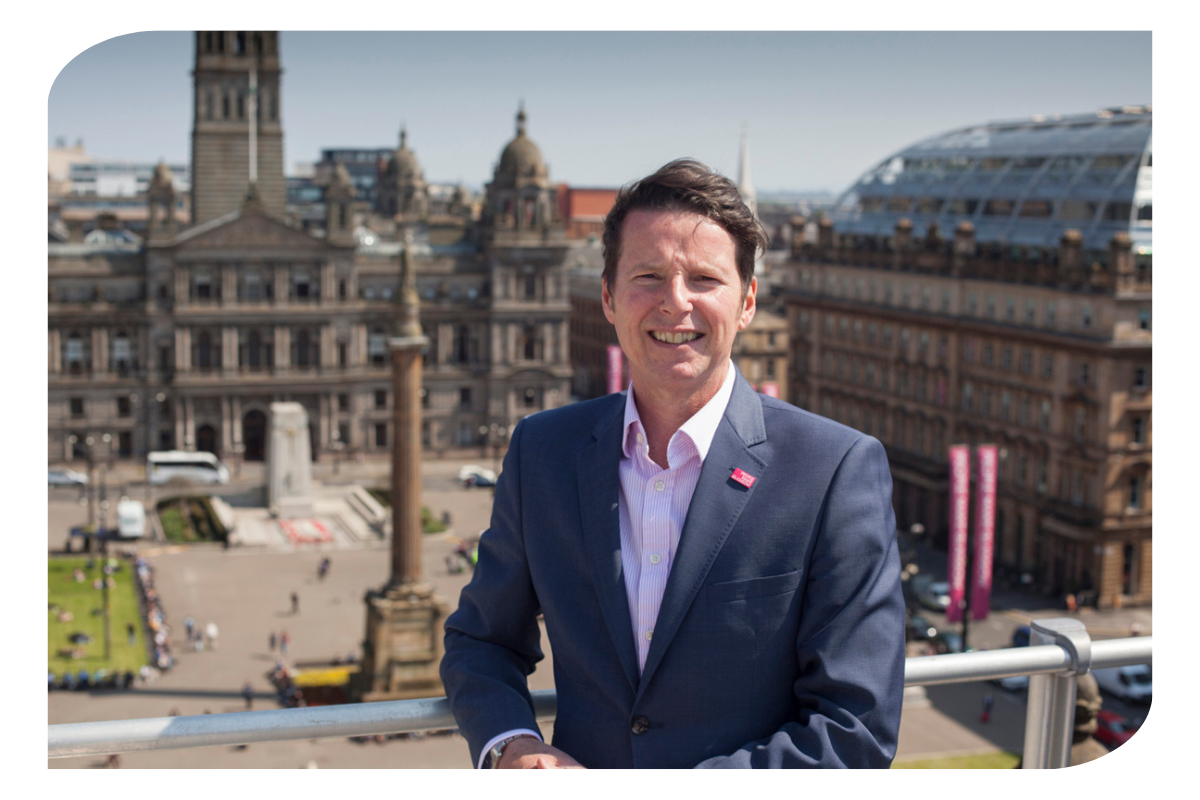
19 Jul 2023
By Richard Muir, Deputy Chief Executive of Glasgow Chamber of Commerce
Over the next 25 years, the rollout of the Clyde Metro across the cityscapes of the Greater Glasgow region will help to usher in a new era of public transport connectivity.
The Clyde Metro programme presents the single greatest opportunity to transform public transport across the west of Scotland, creating a new metropolitan transport network.
It remains one of Glasgow Chamber of Commerce’s 10 key projects to stimulate economic growth and encourage workers and visitors to use the city centre. But with a timescale as far out as 2050 for total completion, there is an expectation that there will be some “quick wins” in the meantime, which include a direct fast-link from Glasgow Airport to the city centre.
Public transport connectivity in Glasgow remains a hot topic in general, with various stakeholders lobbying for support on their individual issues. From the Chamber’s perspective, linking the Airport to the city centre is a major objective, and we are pleased that Clyde Metro has progressed to become a national priority. However, while support is there, the question remains: When will the wheels get in motion for Glasgow’s 21st century metro system?
The current three Clyde Metro project partners, which are Transport Scotland, Strathclyde Passenger Transport (SPT) and Glasgow City Council, have been preparing to deliver a Case for Investment (CFI), comprising a Strategic Business Case, Strategic Environmental Assessment, Preliminary Engineering Statement and Transformational Programme. However, the financial support required is not small, with an estimated bill likely to be between £11billion-16billion.
A particular focus for SPT is to ensure that all 12 council areas in the region benefit from the Clyde Metro directly or indirectly through the provision of ongoing connections and service improvements. The good news is that the Scottish Government’s publication of the Strategic Transport Projects Review 2 (STPR2) reports in December 2022 and Parliamentary Statement in January 2023, confirmed that the Clyde Metro is a key priority for future transport investment.
At the time of going to press, we await the publication of STPR2 Scottish Transport Delivery Plan which will set out the level of funding, delivery structures and timelines for the next phase of Clyde Metro.
While the project will be over a generation in the making, the most immediate proposal will be for high quality public modal transport links to major hubs, including Glasgow Airport. The funding means the scope of the Glasgow City Region City Deal Airport Access Project (AAP) is contained within the wider and significant Clyde Metro network development options and delivery phasing.
A scope of work is already looking at the Clyde Metro business development programme including lead roles, transformation opportunities, procurement commissions, funding and resource requirements, and timelines and processes for key decisions.
The work, completed by the Glasgow City Region (GCR) Metro Feasibility Study (MFS) team, has supported Clyde Metro as a Scottish Government key priority for future transport investment and informing the development of the next business case stage. The team’s remit is expected to transition to work as part of the wider Clyde Metro delivery team across partner organisations.
The project partners are keen to make demonstrable progress on the Metro programme as soon as possible to maintain momentum, and to generate enthusiasm among stakeholders and the public through the delivery of any potential early or preparatory works that will complement the future and continued development of the Clyde Metro over coming years.
SPT’s capital programme also presents an opportunity to get things moving with complementary projects such as new or expanded park and ride locations, development of key hubs and interchanges, improved rural and island transport connections, and improved active travel connections to the wider public transport network.
Clyde Metro will change the face of the region - but it is imperative that the population begins to feel the excitement and see the visible changes that will enhance lives in a greener, zero carbon city.
This article was first published in The Herald on Wednesday 19 July 2023